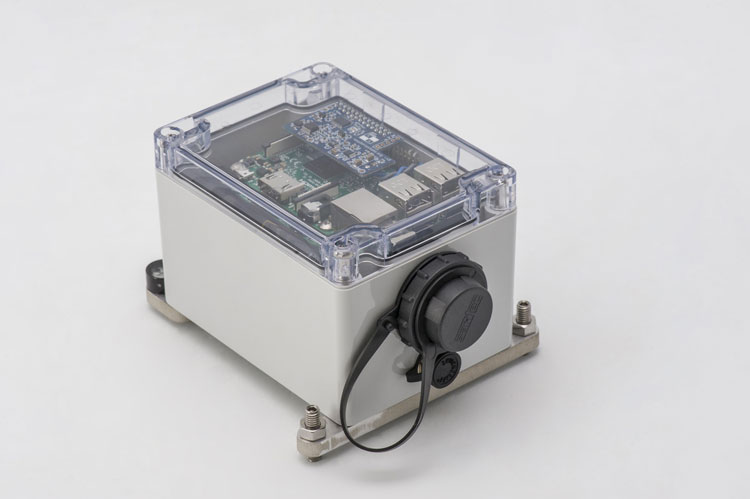MICRO SEISMIC MONITORING
Monitor very local areas and detect micro seismicity within rather small stations network, in a station array distances in the range of kilometers to tenth of kilometers location.
Analyzing Local Seismic Activity
Gempa implemented a cluster search algorithm to associate detections to one or many potential earthquake sources. While the cluster search itself is based on P-phases only, in a second step S-phases are also associated and used for locating the earthquake.
Moreover, the moment tensor solution associated to such analysis is typically displayed graphically using a beach ball diagram. The pattern of energy radiated during an earthquake with a single direction of motion on a single fault plane may be modeled as a double couple. This is described mathematically as a special case of a second order tensor (similar to those for stress and strain) known as the moment tensor.
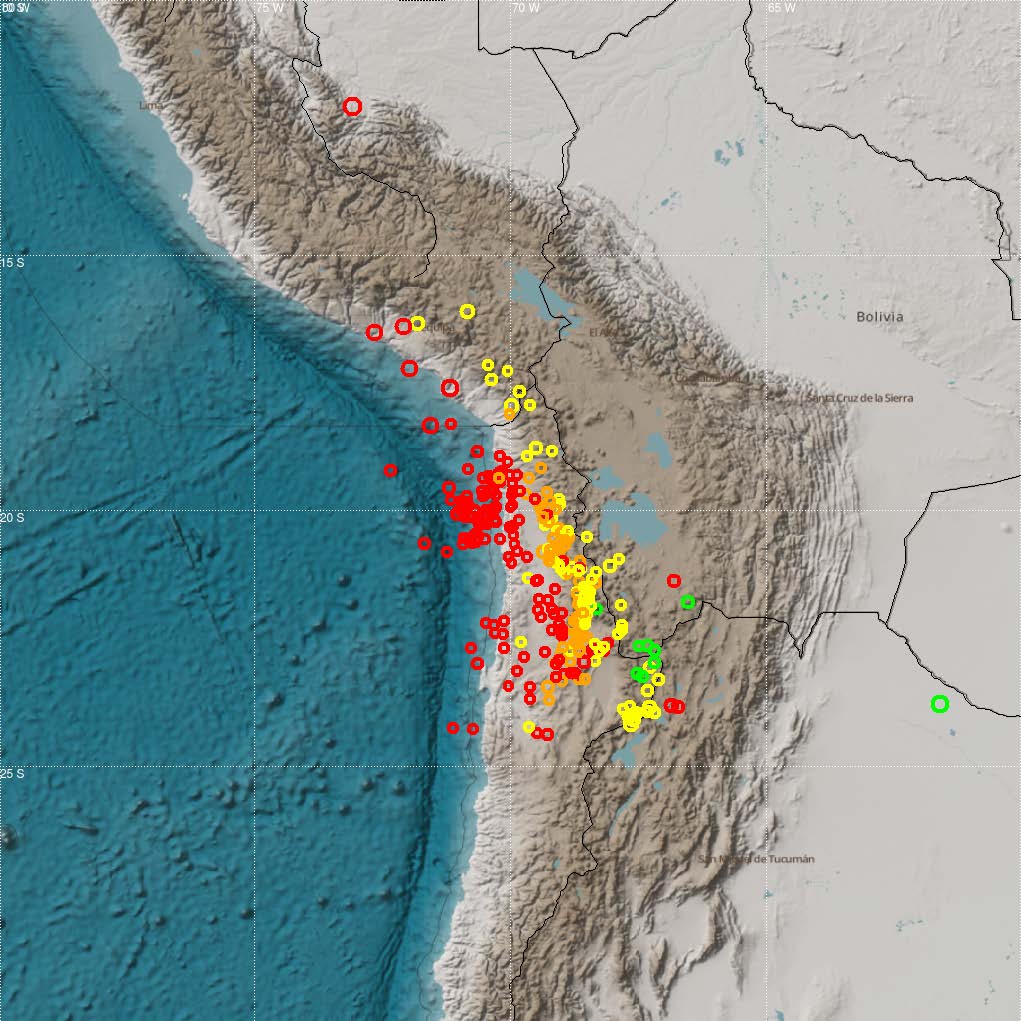
Technology
The focal mechanism of an earthquake describes the inelastic deformation in the source region that generates the seismic waves. In the case of a fault-related event it refers to the orientation of the fault plane that slipped and the slip vector; it is also known as a fault-plane solution. Focal mechanisms are derived from a solution of the moment tensor for the earthquake, which itself is estimated by an analysis of observed seismic waveforms.
Our moment tensor inversion technique uses a combination of several seismic wave types, time windows and frequency bands carefully chosen based on event magnitude and station distance. Wave types include body waves, surface waves, mantle waves as well as the ‘W-Phase’ (Kanamori and Rivera, 2008).
The inversion is performed in the time domain only. An iterative centroid search can be performed independently both horizontally and in depth.
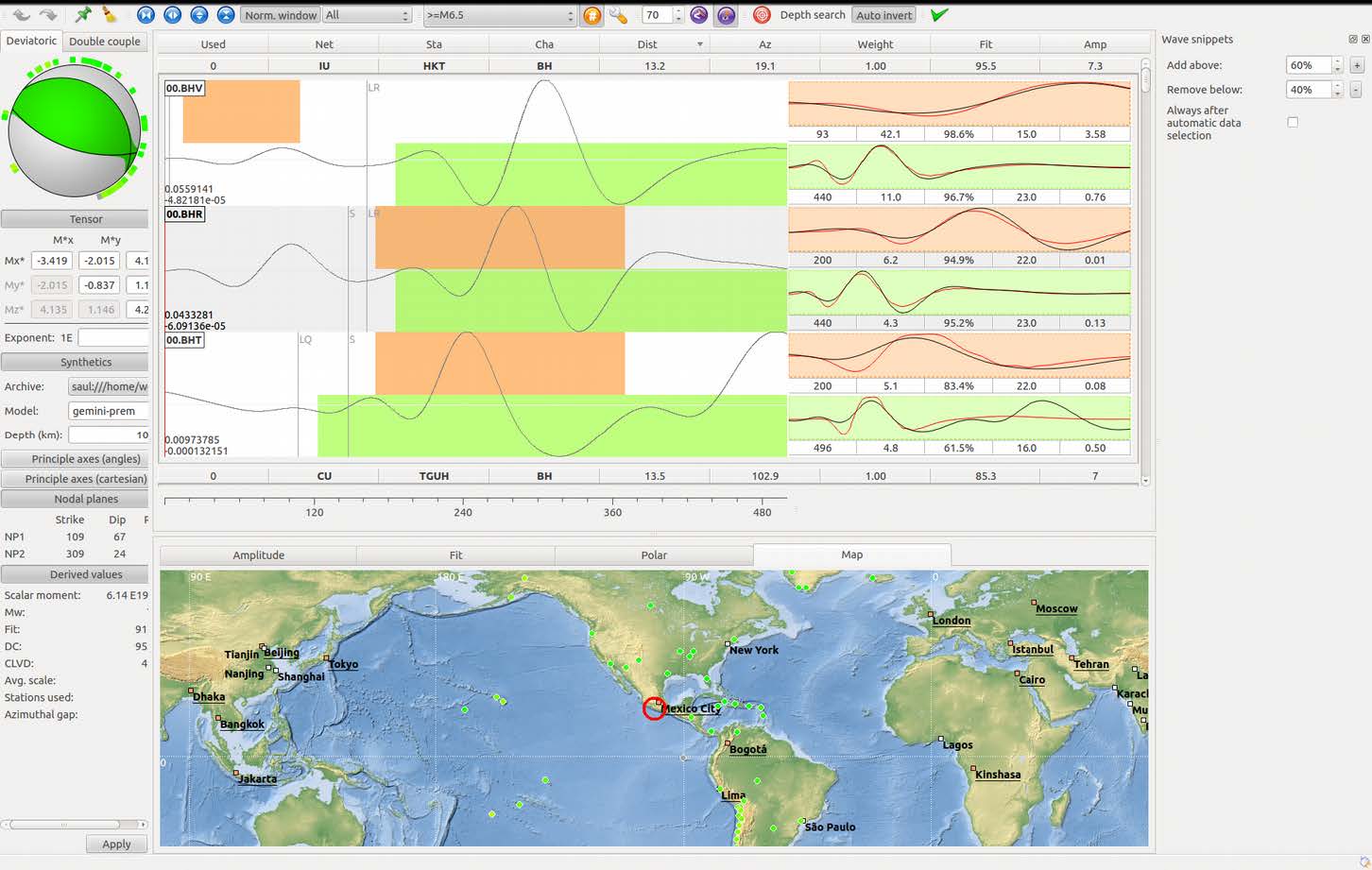
Moreover, it is a clustering and association tool to detect and locate local to regional earthquakes using the cluster search algorithm DBSCAN. The cluster search is able to identify phase picks from a cloud of possible picks and to associating them to earthquakes.
Such algorithms have been named scanloc. Scanloc has proven its usefulness, for example, by detecting 200-300 earthquakes a day with magnitudes ranging from M1 to M4 with only a few false detections per day. This was in the CX network (Chile) with station distances of about 50-70 kilometers.
It also associates additional incoming P- and S-phases to already existing internal or external hypocenter solutions. In high-seismcity areas scanloc ensures reliability of earthquake hypocenters at a wide range of magnitudes. Scanloc is perfect for monitoring geothermal sites.
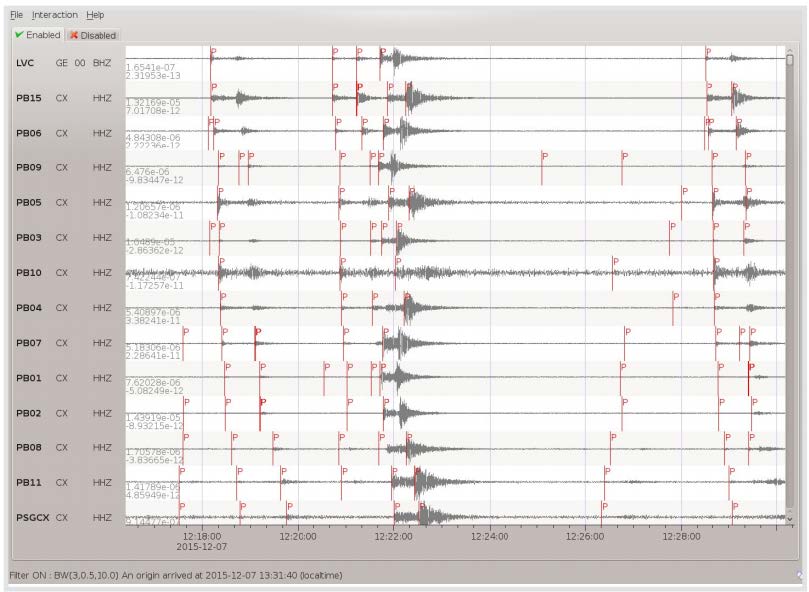
In addition, new advanced features and 4th generation state-of-the-art instruments are getting developed more oriented to Seismic Densification Applications. This is in order to improve the main variables of seismic network operations such as: accuracy, time response, network control, latency,
data integrity, availability, etc.
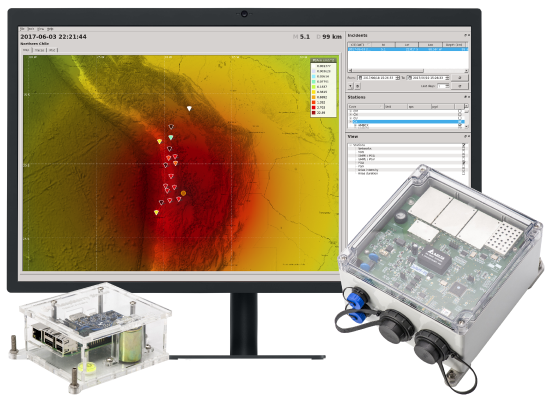
Other Recommended Applications
Web based Earthquake Analysis
Local and Regional Earthquake Monitoring
Geothermal Monitoring
Volcano Monitoring
Product Information
Gempa Geoservices S.A. works directly with our partners at Raspberry Shake S.A. integrating, as an example, a high resolution seismograph and acceleorgraph stations into our portfolio – the Raspberry Shake 4D.
We can also integrate these applications with the Raspberry Shake 4D. This is an IoT plug-and-play solution, which like the name suggests, FOUR sensors. Combined with the geophone from the original Raspberry Shake, we have added 3 strong motion MEMs accelerometers to give the device a total of four recording channels.
The circuit board of the Raspberry Shake 4D incorporates four 24 bit digitizers, each sampling the Earth’s motion at 100 samples per second (double its predecessor). We have also been able to boost the data transmission rate from one packet per second to four, which makes our latest version of the Raspberry Shake Earthquake Early Warning compatible.
The main features of this technology are as follow:
- Plug-and-play affordable home Earth monitoring solution
- Detect & measure earthquakes & seismic activities like structural motion, fracking, explosions, eruptions, avalanches, landslides, etc.
- Includes the Raspberry Pi board and all components
- Comes pre-built with everything you need to have your Raspberry Shake 4D working right out of the box
- Measure and record the Earth’s motion in all directions
- 100 samples per second sample rate (the original Raspberry Shake works at 50 sps)
- Includes a custom built rain proof, dust proof, bug proof, all weather enclosure
- 3 x orthogonally orientated MEMs acceleration sensors
For more information, read the technical specifications.

